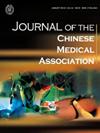Effectiveness of early palliative care in patients with head and neck cancer in Taiwan
IF 1.9
4区 医学
Q2 MEDICINE, GENERAL & INTERNAL
引用次数: 0
Abstract
Early palliative care (EPC) benefits some cancers, but its clinical outcomes differ depending on patients’ racial and ethnic disparities, and customs. To determine whether EPC improves symptoms, emotional distress, and quality of life among Taiwanese patients with early or advanced-stage head and neck cancer (HNC). Based on participants’ pathological stages, they were categorized as having early and advanced-stage HNC. Those willing and unwilling to undergo EPC were assigned to the EPC and standard groups, respectively. Their daily cancer-related symptoms were assessed using the Distress Thermometer (DT) and MD Anderson Symptom Inventory (MDASI), whose scores’ concurrent validity was evaluated using the European Organization for Research and Treatment of Core Quality of Life (EORTC-QLQ-C30) and Head and Neck 35 (EORTC-QLQ-H&N35) questionnaires. Patients (n=93) diagnosed with HNC at Taiwan’s Chia-Yi Christian Hospital from November 2020 to October 2022 were recruited. The patients voluntarily split into two groups: EPC groups and standard groups (23 and 11 in early-stage; 46 and 13 in advanced-stage, respectively). DT assessment showed significant emotional distress improvements for all patients with HNC who received EPC. The EORTC-QLQ-C30 questionnaire indicated that, compared to standard interventions, EPC groups significantly improved the quality of life and some symptoms for both early and advanced-stage HNC patients. However, the EORTC-QLQ-H&N35 questionnaire found no significant difference between the two groups. Furthermore, advanced-stage patients’ anti-cancer treatment completion rates with EPC and standard interventions were 95.35% and 75%, respectively. EPC improves symptoms, emotional distress, quality of life, and treatment completion rates in Taiwanese patients with early or advanced-stage HNC. Nonetheless, further extensive clinical studies are required for validation.台湾头颈癌患者早期姑息治疗的效果
早期姑息治疗(EPC)可使某些癌症患者获益,但其临床效果却因患者的种族、民族差异和风俗习惯而异。目的:确定早期姑息治疗是否能改善台湾早期或晚期头颈癌(HNC)患者的症状、情绪困扰和生活质量。 根据参与者的病理分期,将他们分为早期和晚期HNC患者。愿意和不愿意接受EPC治疗的患者分别被分配到EPC组和标准组。他们的日常癌症相关症状使用窘迫温度计(DT)和MD安德森症状量表(MDASI)进行评估,其得分的同期有效性使用欧洲研究与治疗组织核心生活质量(EORTC-QQLQ-C30)和头颈部35(EORTC-QQLQ-H&N35)问卷进行评估。 研究人员招募了2020年11月至2022年10月期间在台湾嘉义基督教医院确诊为HNC的患者(n=93)。患者自愿分为两组:EPC组和标准组(早期患者分别为23人和11人;晚期患者分别为46人和13人)。DT评估显示,所有接受EPC治疗的HNC患者的情绪困扰均有明显改善。EORTC-QLQ-C30 问卷显示,与标准干预相比,EPC 组明显改善了早期和晚期 HNC 患者的生活质量和某些症状。然而,EORTC-QLQ-H&N35 问卷调查显示,两组之间没有明显差异。此外,晚期患者接受 EPC 和标准干预的抗癌治疗完成率分别为 95.35% 和 75%。 EPC可改善台湾早期或晚期HNC患者的症状、情绪困扰、生活质量和治疗完成率。不过,还需要进一步广泛的临床研究来验证。
本文章由计算机程序翻译,如有差异,请以英文原文为准。
求助全文
约1分钟内获得全文
求助全文
来源期刊

Journal of the Chinese Medical Association
MEDICINE, GENERAL & INTERNAL-
CiteScore
6.20
自引率
13.30%
发文量
320
审稿时长
15.5 weeks
期刊介绍:
Journal of the Chinese Medical Association, previously known as the Chinese Medical Journal (Taipei), has a long history of publishing scientific papers and has continuously made substantial contribution in the understanding and progress of a broad range of biomedical sciences. It is published monthly by Wolters Kluwer Health and indexed in Science Citation Index Expanded (SCIE), MEDLINE®, Index Medicus, EMBASE, CAB Abstracts, Sociedad Iberoamericana de Informacion Cientifica (SIIC) Data Bases, ScienceDirect, Scopus and Global Health.
JCMA is the official and open access journal of the Chinese Medical Association, Taipei, Taiwan, Republic of China and is an international forum for scholarly reports in medicine, surgery, dentistry and basic research in biomedical science. As a vehicle of communication and education among physicians and scientists, the journal is open to the use of diverse methodological approaches. Reports of professional practice will need to demonstrate academic robustness and scientific rigor. Outstanding scholars are invited to give their update reviews on the perspectives of the evidence-based science in the related research field. Article types accepted include review articles, original articles, case reports, brief communications and letters to the editor
 求助内容:
求助内容: 应助结果提醒方式:
应助结果提醒方式:


